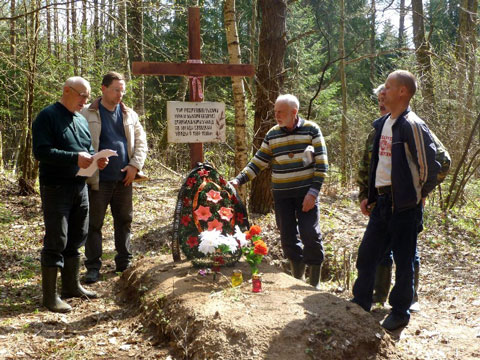Mass Grave near Viciebsk: WWII or NKVD executions?
The mass grave was found in November 2014 – bones and skulls in large pits. Local elderly people say that Stalin repressions were undergoing there in 1930ies. The authorities claim the graves to be those of the victims of World War II.
Opponents have been leading the dispute for more than a year. The activists who found the grave launched the civil initiative Khaisy: they record testimonies of old witnesses and search for historic testimonies of NKVD activities in the region.
The local executive committee created the “organizational committee to commemorate defenders of the Motherland and war victims” who decide how to bury the remnants and search for the Second World War testimonies.
Last autumn, military search battalion No 52 carried out exhumation and systematized the personal belongings – male and female clothing and footwear; a report was submitted. However, the report has not been published: the authorities showed only pages 10 and 11 outlining the officials’ reasoning as an evident proof of the version of WWII.
“However, it says that only “a link is being observed” with the time because there has been found a piece of cloth presumed to be from a German uniform jacket. Nothing strange: the war was raging in the place! But there were also other things found – coins dated to 1930ies, footwear with stamps of 1930ies, bullet shells belonging to the weapons that NKVD used, and the skulls have holes in the back of the head. But no bullet shells from German weapons. And the main thing is that we don’t know what the report says which the local executive committee hides from us,” says the founder of the initiative Yan Dziarzhautsau.
He thinks that simple publication of the report would lay end to all the doubts.
The activists asked to see the document, but the executive committee declined, under the pretext that the document belonged to the military search battalion. But the answer from the battalion referred the activists back to the executive committee. The activists repeatedly sent the request to the local executive committee and to the department on commemoration of perished soldiers. The activists attached the video recordings with the testimonies of eyewitnesses. They are worried also that the state press has already presented the version of WWII as the most feasible.


















